Benchmark Sea Trials on a 6-Meter Boat Powered by Kite
Abstract
1. Introduction
2. Reference Frames
2.1. North East Down (NED) Reference Frame
2.2. Heading Reference Frame
2.3. Ship Reference Frame
2.4. Onshore Measurement Wind Reference Frame
2.5. Relative Wind Reference Frame
2.6. Aerodynamic Reference Frame
2.7. Kite Position
3. Experimental Set-Up
3.1. Kiteboat Specific Sensors
3.1.1. GPS and IMU
3.1.2. Rudder Angle
3.2. Wind Measurements
3.2.1. Kiteboat Sytems
3.2.2. Bay of Quiberon Wind Measurement Systems
3.2.3. Sailing Area
3.3. Design of Experiments
3.3.1. Kite
3.3.2. Daggerboards
3.3.3. True Wind Angle
3.3.4. True Wind Speed
3.3.5. Tether Lengths
3.3.6. Kite Flight
3.3.7. Kite Attachment Point
3.3.8. Propulsion
3.4. Available Data
3.4.1. Kiteboat Data
3.4.2. Wind Data
4. Post Processing
4.1. Boat Related Equations
4.2. Equations Related to Wind Data from Onboard Sensors
4.3. Kite Related Equations
4.4. Wind Estimation on the Kite
4.4.1. Power Law
4.4.2. Profiler Data
4.4.3. Solution Based on the Profiles from the Weather Modelling
4.4.4. Solution Based only on the Data from the Weather Modelling
5. Results
5.1. Overview of the Achievements
5.2. Benchmark of Redundant Wind Data
5.3. Average Data
5.3.1. Roll and Pitch Offset Compensation
5.3.2. Polar Diagrams of the Kiteboat
- Kite Cabrinha 12 m
- 50 m tethers
- Black daggerboard
- Kite attachment point at 2.68 m
- No Motor
5.3.3. Running Resistance Curve of the Kiteboat
5.3.4. Effects of Daggerboards on Boat Motions
5.3.5. Back Tether Ratio
5.3.6. Power Ratio.
5.4. Results Processed with Phase-Averaging Method
6. Discussion
7. Conclusions
Author Contributions
Funding
Conflicts of Interest
Appendix A. Kiteboat Averaged Results


References
- Loyd, M.L. Crosswind kite power (for large-scale wind power production). J. Energy 1980, 4, 106–111. [Google Scholar] [CrossRef]
- Argatov, I.; Rautakorpi, P.; Silvennoinen, R. Estimation of the mechanical energy output of the kite wind generator. Renew. Energy 2009, 34, 1525–1532. [Google Scholar] [CrossRef]
- Fagiano, L. Control of Tethered Airfoils for High-Altitude Wind Energy Generation. Ph.D. Thesis, Politecnico di Torino, Torino, Italy, 2009. [Google Scholar]
- Schmehl, R. Kiting for wind power. Wind Syst. 2012, 27, 36–43. [Google Scholar]
- van der Vlugt, R.; Peschel, J.; Schmehl, R. Design and experimental characterization of a pumping kite power system. In Airborne Wind Energy; Springer: Berlin/Heidelberg, Germany, 2013; pp. 403–425. [Google Scholar]
- Erhard, M.; Strauch, H. Flight control of tethered kites in autonomous pumping cycles for airborne wind energy. Control Eng. Pract. 2015, 40, 13–26. [Google Scholar] [CrossRef]
- Erhard, M.; Strauch, H. Automatic Control of Pumping Cycles for the SkySails Prototype in Airborne Wind Energy. In Airborne Wind Energy; Springer: Singapore, 2018; pp. 189–213. [Google Scholar]
- Oehler, J.; Schmehl, R. Aerodynamic characterization of a soft kite by in situ flow measurement. Wind Energy Sci. 2019, 4, 1–21. [Google Scholar] [CrossRef]
- Wellicome, J.F.; Wilkinson, S. Ship Propulsive Kites: An Initial Study; Technical Report; Department of Ship Science, University of Southampton: Southampton, UK, 1984. [Google Scholar]
- Wellicome, J. Some comments on the relative merits of various wind propulsion devices. J. Wind Eng. Ind. Aerodyn. 1985, 20, 111–142. [Google Scholar] [CrossRef]
- Naaijen, P.; Koster, V.; Dallinga, R.P. On the power savings by an auxiliary kite propulsion system. Int. Shipbuild. Prog. 2006, 53, 255–279. [Google Scholar] [CrossRef]
- Dadd, G.M. Kite Dynamics for Ship Propulsion. Ph.D. Thesis, University of Southampton, Southampton, UK, 2013. [Google Scholar]
- Erhard, M.; Strauch, H. Control of towing kites for seagoing vessels. IEEE Trans. Control Syst. Technol. 2013, 21, 1629–1640. [Google Scholar] [CrossRef]
- Leloup, R.; Roncin, K.; Bles, G.; Leroux, J.B.; Jochum, C.; Parlier, Y. Kite and classical rig sailing performance comparison on a one design keel boat. Ocean Eng. 2014, 90, 39–48. [Google Scholar] [CrossRef]
- Leloup, R.; Roncin, K.; Behrel, M.; Bles, G.; Leroux, J.B.; Jochum, C.; Parlier, Y. A continuous and analytical modelling for kites as auxiliary propulsion devoted to merchant ships, including fuel saving estimation. Renew. Energy 2016, 86, 483–496. [Google Scholar] [CrossRef]
- Dadd, G.M.; Hudson, D.A.; Shenoi, R. Comparison of two kite force models with experiment. J. Aircr. 2010, 47, 212–224. [Google Scholar] [CrossRef]
- van der Vlugt, R.; Bley, A.; Noom, M.; Schmehl, R. Quasi-steady model of a pumping kite power system. Renew. Energy 2019, 131, 83–99. [Google Scholar] [CrossRef]
- Schnackenburg, T.; Brabeck, S. Vessel propulsion using kites. In Proceedings of the 20th International HISWA Symposium on Yacht Design and Yacht Construction, Amsterdam, The Netherlands, 17–18 November 2008; Rai Amsterdam: Amsterdam, The Netherlands, 2008. [Google Scholar]
- Fritz, F. Application of an automated kite system for ship propulsion and power generation. In Airborne Wind Energy; Springer: Berlin/Heidelberg, Germany, 2013; pp. 359–372. [Google Scholar]
- Paulig, X.; Bungart, M.; Specht, B. Conceptual design of textile kites considering overall system performance. In Airborne Wind Energy; Springer: Berlin/Heidelberg, Germany, 2013; pp. 547–562. [Google Scholar]
- Behrel, M.; Roncin, K.; Leroux, J.B.; Montel, F.; Hascoet, R.; Neme, A.; Jochum, C. Application of phase averaging method for measuring kite performance: Onshore results. J. Sail. Technol. 2018, 1–29. [Google Scholar] [CrossRef]
- Canale, M.; Fagiano, L.; Milanese, M.; Razza, V. Control of tethered airfoils for sustainable marine transportation. In Proceedings of the IEEE International Conference on Control Applications, Yokohama, Japan, 8–10 September 2010; IEEE: Piscataway, NJ, USA, 2010; pp. 1904–1909. [Google Scholar]
- Fagiano, L.; Milanese, M.; Razza, V.; Gerlero, I. Control of power kites for naval propulsion. In Proceedings of the 2010 American Control Conference, Baltimore, MD, USA, 30 June–2 July 2010; IEEE: Piscataway, NJ, USA, 2010; pp. 4325–4330. [Google Scholar]
- Fagiano, L.; Milanese, M.; Razza, V. Optimization and control of a hybrid kite boat1. IFAC Proc. Vol. 2011, 44, 14748–14753. [Google Scholar] [CrossRef]
- Fagiano, L.; Milanese, M.; Razza, V.; Bonansone, M. High-altitude wind energy for sustainable marine transportation. IEEE Trans. Intell. Transp. Syst. 2012, 13, 781–791. [Google Scholar] [CrossRef]
- Bigi, N.; Behrel, M.; Roncin, K.; Leroux, J.B.; Neme, A.; Jochum, C.; Parlier, Y. Dynamic modeling of ships towed by kite. La Houille Blanche 2018. [Google Scholar] [CrossRef]
- Bigi, N.; Roncin, K.; Leroux, J.B.; Parlier, Y. Ship towed by kite: Investigation of the dynamic coupling. J. Mar. Sci. Eng. 2020, 8, 486. [Google Scholar] [CrossRef]
- Pérez, T.; Fossen, T.I. Time-vs. frequency-domain Identification of parametric radiation force models for marine structures at zero speed. Model. Identif. Control 2008, 29, 1–19. [Google Scholar] [CrossRef]
- Salvesen, N.; Tuck, E.; Faltinsen, O. Ship motions and sea loads. Trans. SNAME 1970, 78, 250–287. [Google Scholar]
- Irvine, M.; Longo, J.; Stern, F. Pitch and Heave Tests and Uncertainty Assessment for a Surface Combatant in Regular Head Waves. J. Ship Res. 2008, 52, 146–163. [Google Scholar]
- The University of Iowa. EFD Data; The University of Iowa: Iowa City, IA, USA, 2013. [Google Scholar]
- Behrel, M.; Bigi, N.; Roncin, K.; Grelon, D.; Montel, F.; Nême, A.; Leroux, J.B.; Jochum, C.; Parlier, Y. Measured Performance of a 50-m2 Kite on a Trawler. In Proceedings of the 10th Symposium on High-Performance Marine Vehicles (Hiper), Technische Universitat Hamburg Harburg, Cortona, Italy, 17–19 October 2016; pp. 443–457. [Google Scholar]
- Group, I.Q.S. ITTC Symbols and Terminology List. Technical Report; International Towing Tank Conference, Copenhagen, Denmark. 2014. Available online: https://ittc.info/media/4004/structured-list2014.pdf (accessed on 2 September 2020).
- ISO 1151-1-4. Flight Dynamics—Concepts, Quantities and Symbols—Part 1: Aircraft Motion Relative to the Air; Technical Report; ISO: Geneve, Switzerland, 1988. [Google Scholar]
- Roncin, K.; Kobus, J.M.; Iackine, P.; Barré, S. Méthodologie pour la validation du simulateur de voilier par des essais en mer, une première tentative. In Proceedings of the Workshop Science-Voile, Ecole Navale, Lanveoc-Poulmic, France, 3–4 May 2005; pp. 1–10. [Google Scholar]
- Mestayer, P.G.; Calmet, I.; Herlédant, O.; Barré, S.; Piquet, T.; Rosant, J. A Coastal Bay Summer Breeze Study, Part 1: Results of the Quiberon 2006 Experimental Campaign. Bound.-Layer Meteorol. 2018, 167, 1–26. [Google Scholar] [CrossRef]
- Fagiano, L.; Zgraggen, A.U.; Morari, M.; Khammash, M. Automatic crosswind flight of tethered wings for airborne wind energy: Modeling, control design and experimental results. IEEE Trans. Control Syst. Technol. 2014, 22, 1433–1447. [Google Scholar]
- Messager, C. Rapport-2017-ENSTA-01; Technical Report; EXWEXs: Brest, France, 2017. [Google Scholar]
- Skamarock, W.; Klemp, J.; Dudhi, J.; Gill, D.; Barker, D.; Duda, M.; Huang, X.Y.; Wang, W.; Powers, J. A Description of the Advanced Research WRF Version 3; Technical Report; National Center for Atmospheric Research: Boulder, CO, USA, 2008. [Google Scholar] [CrossRef]
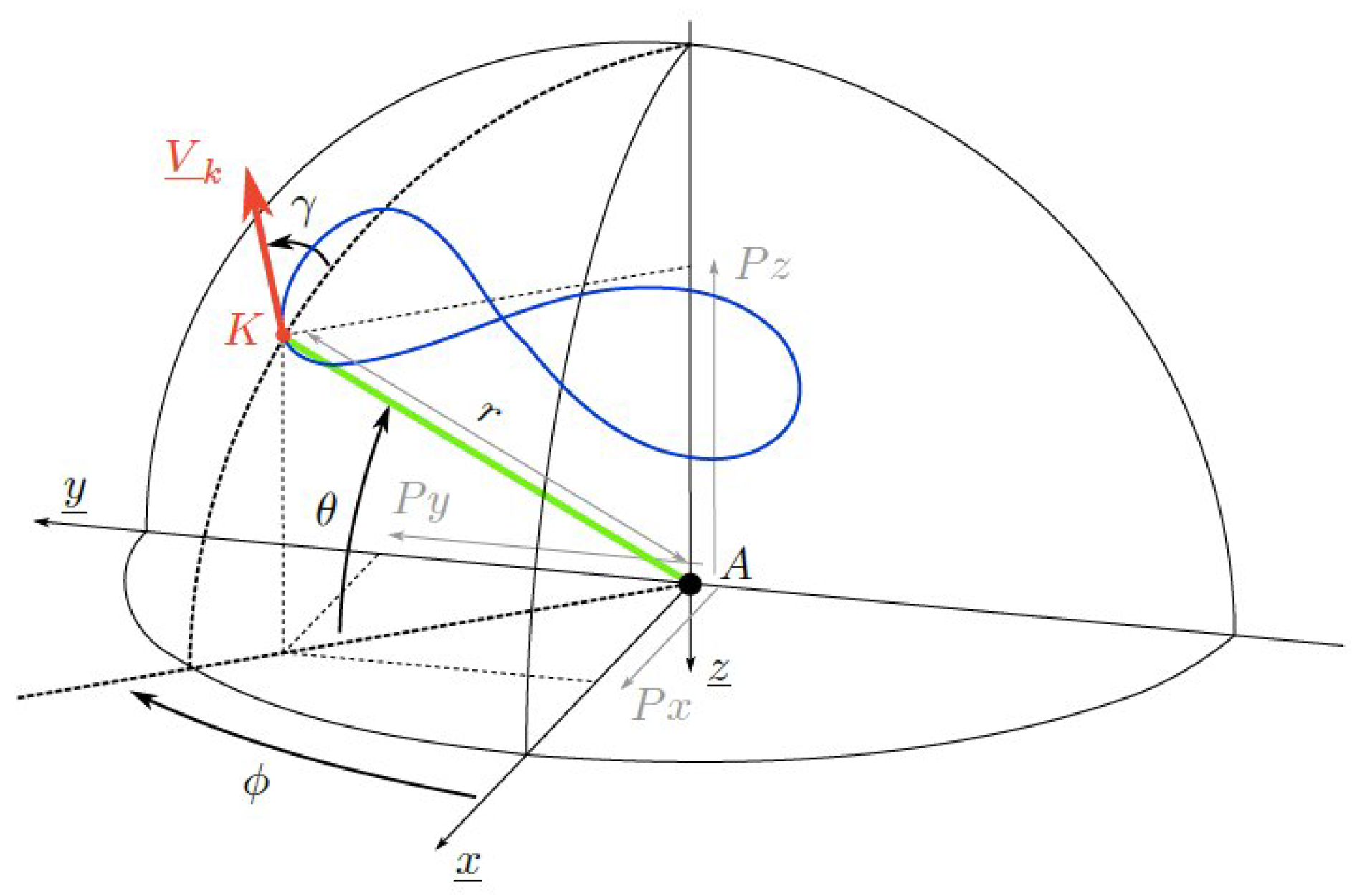
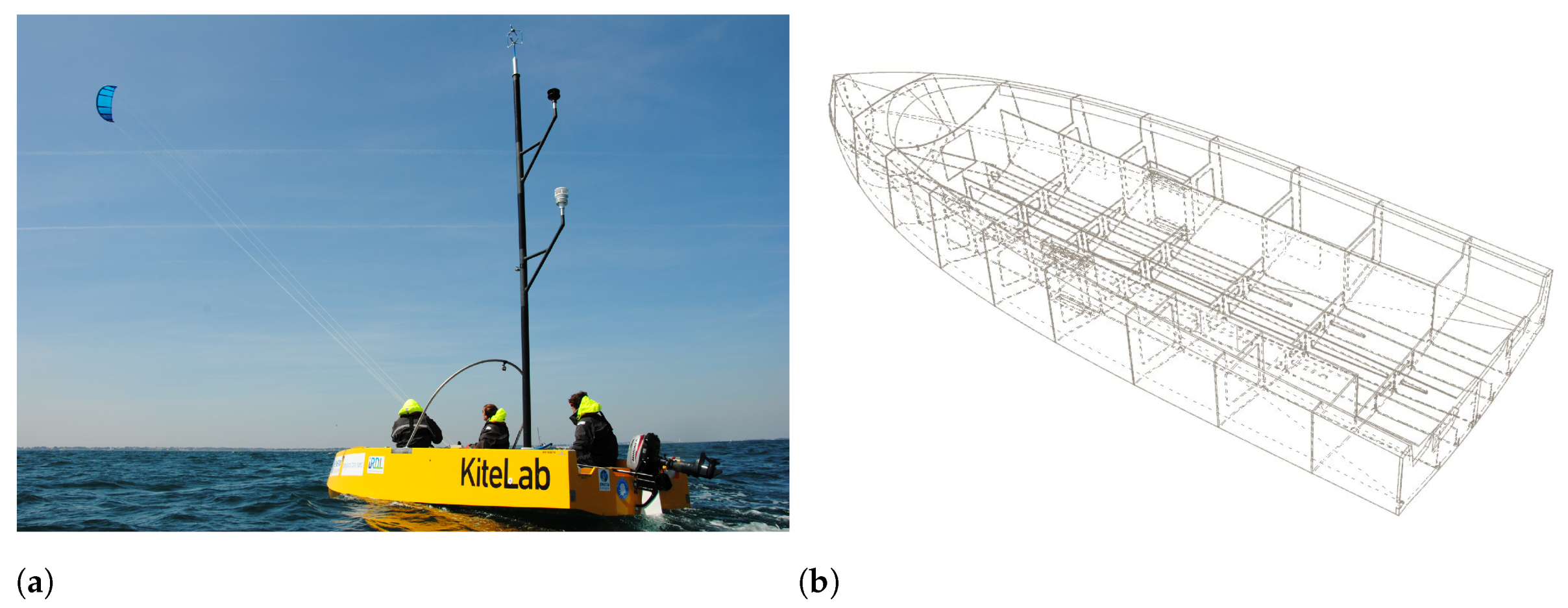

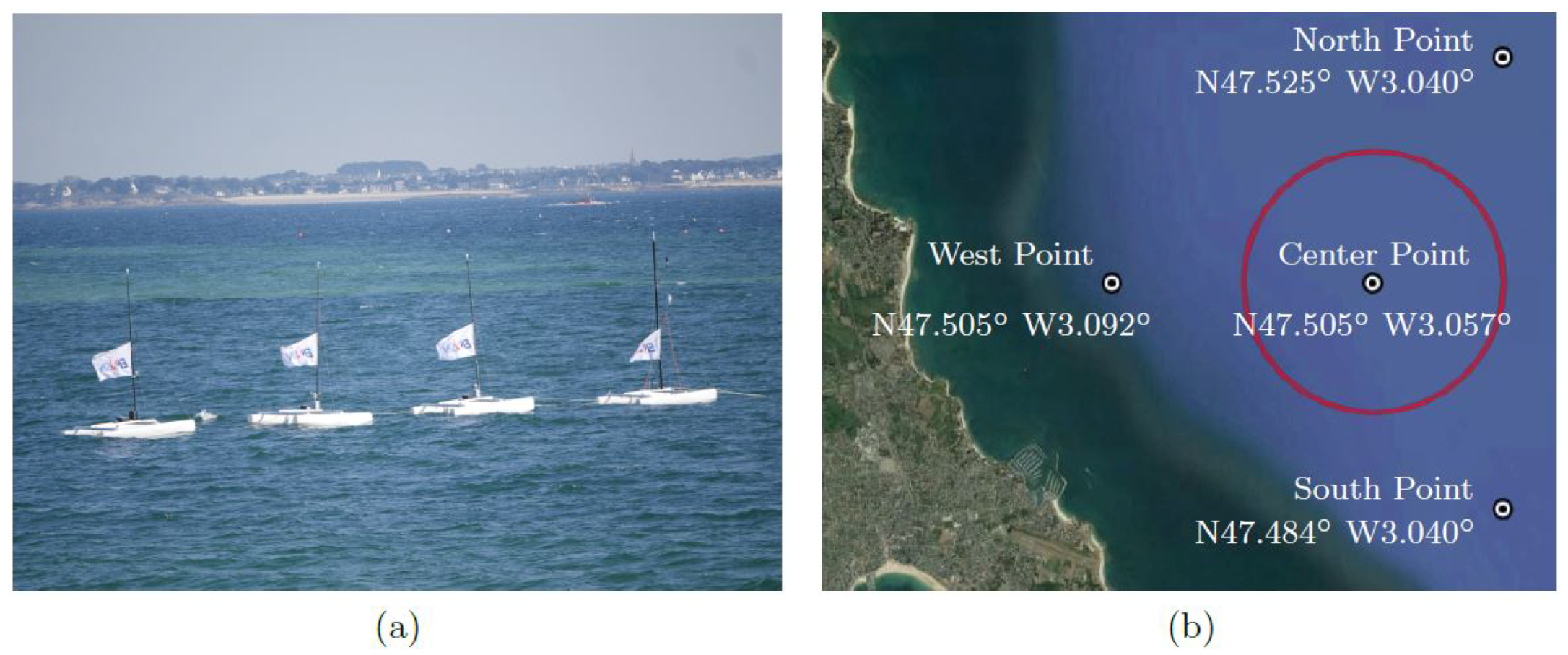
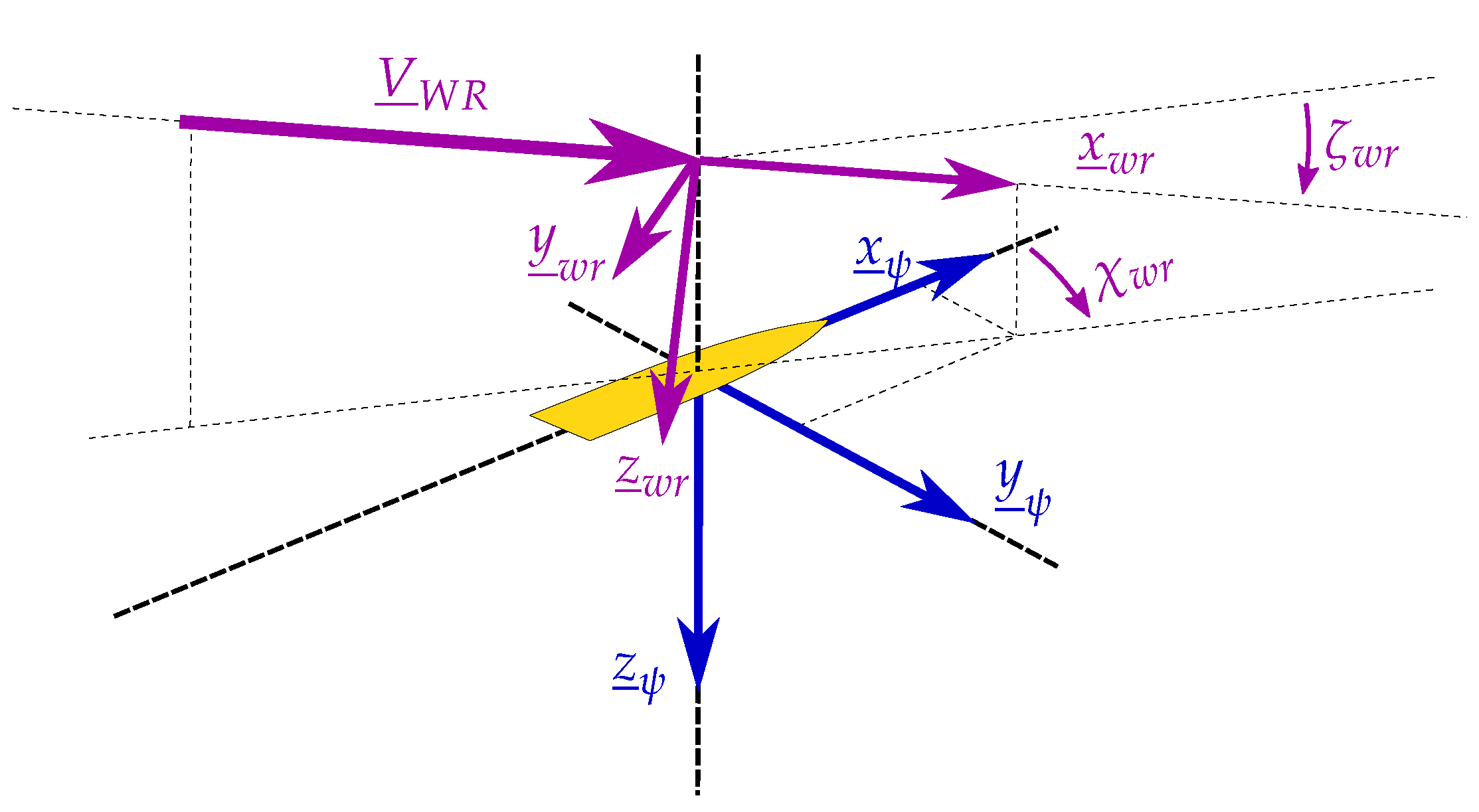
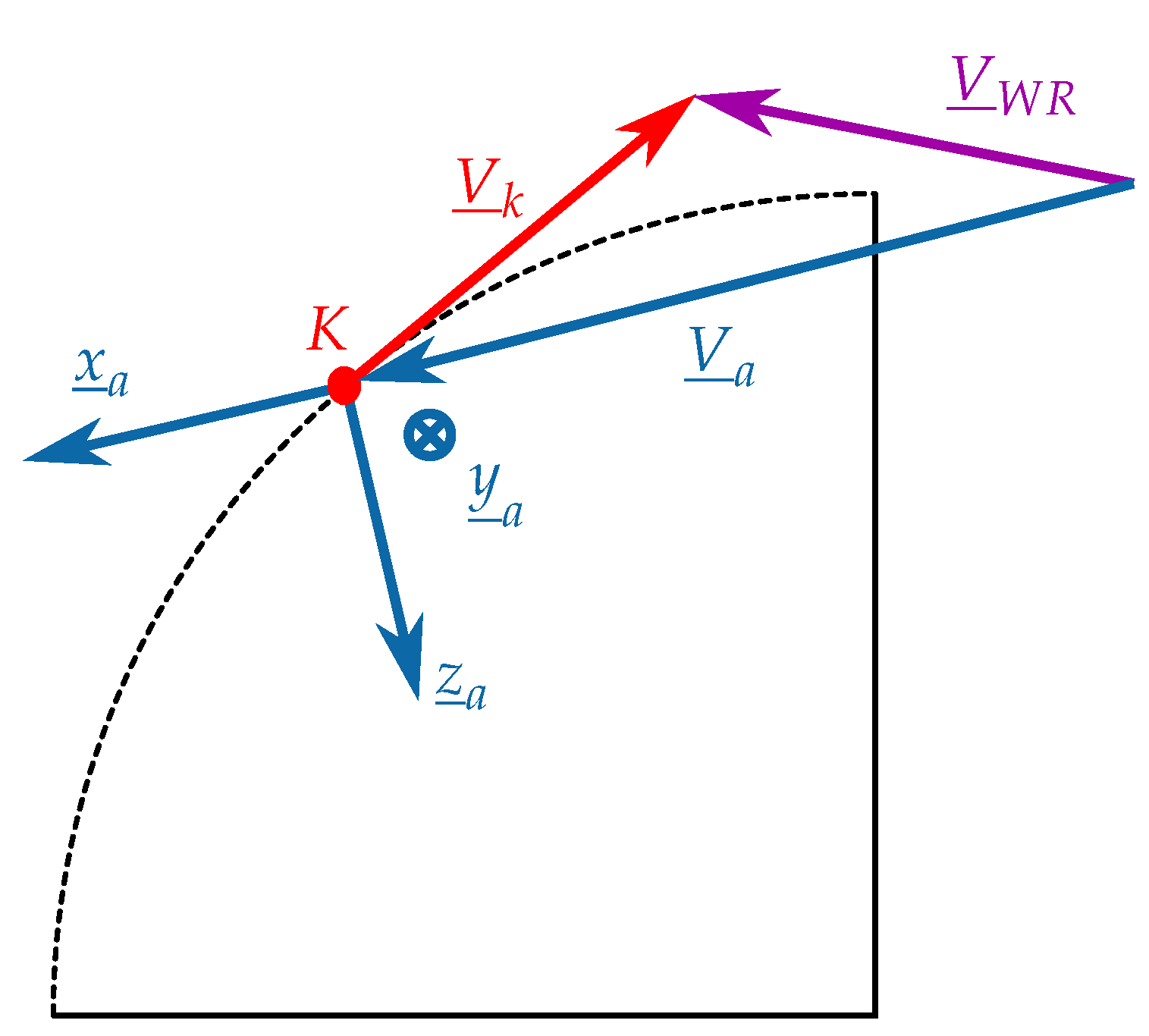

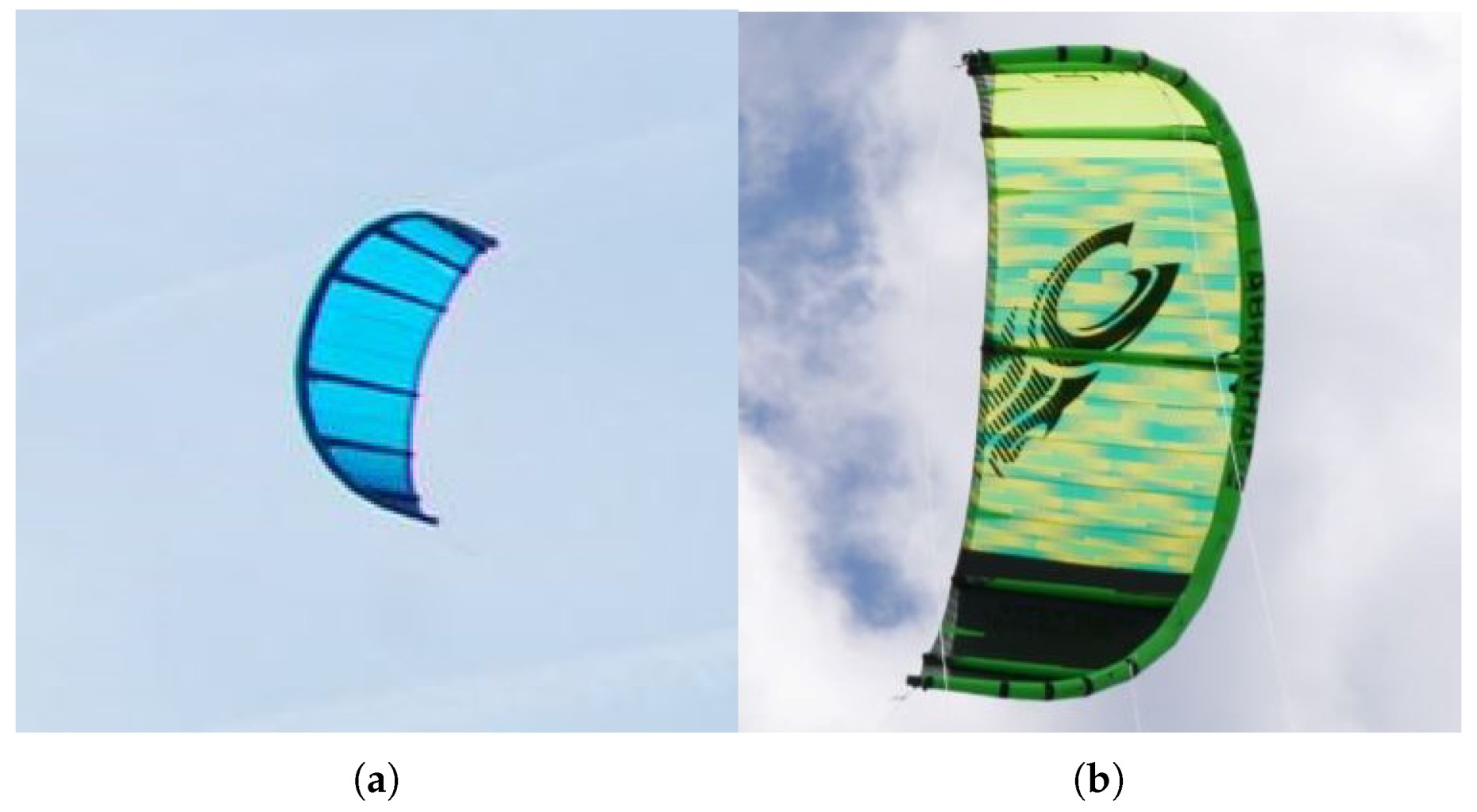

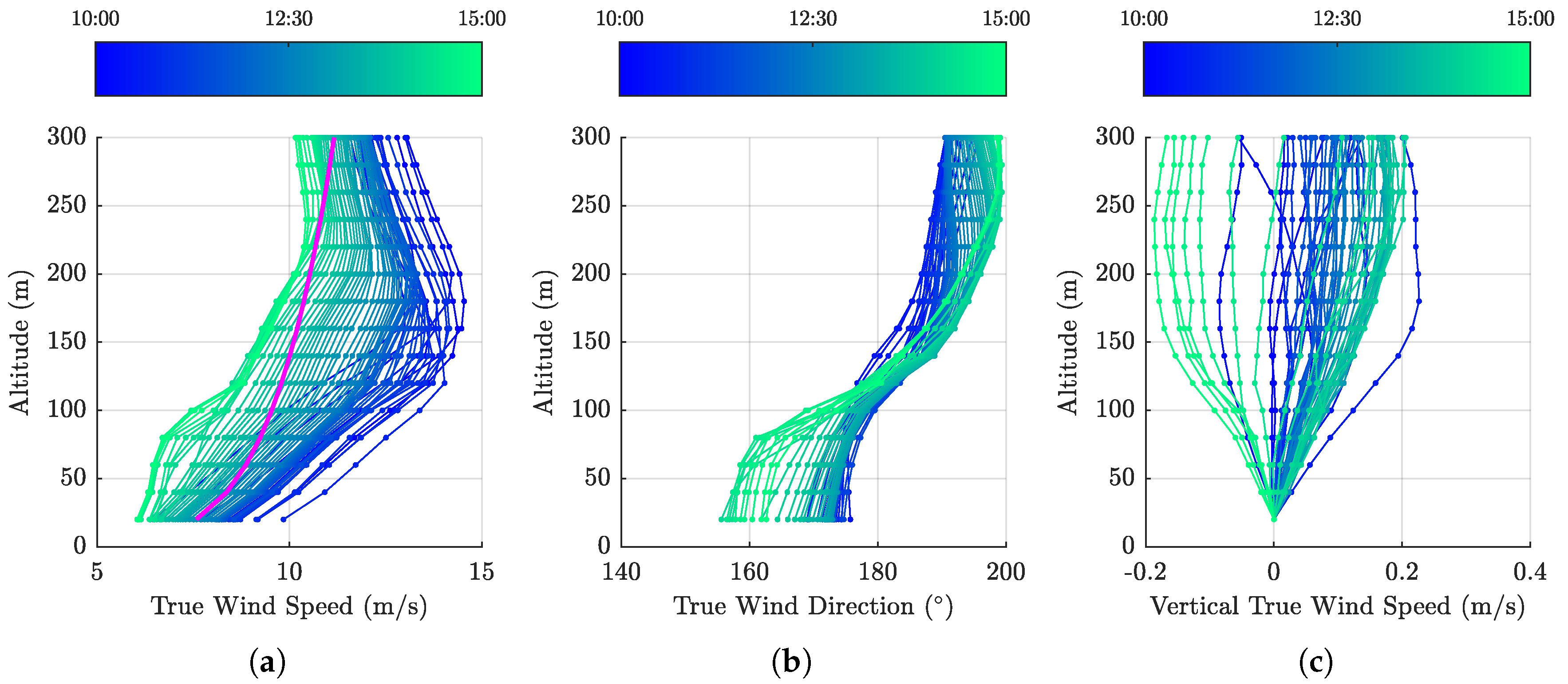
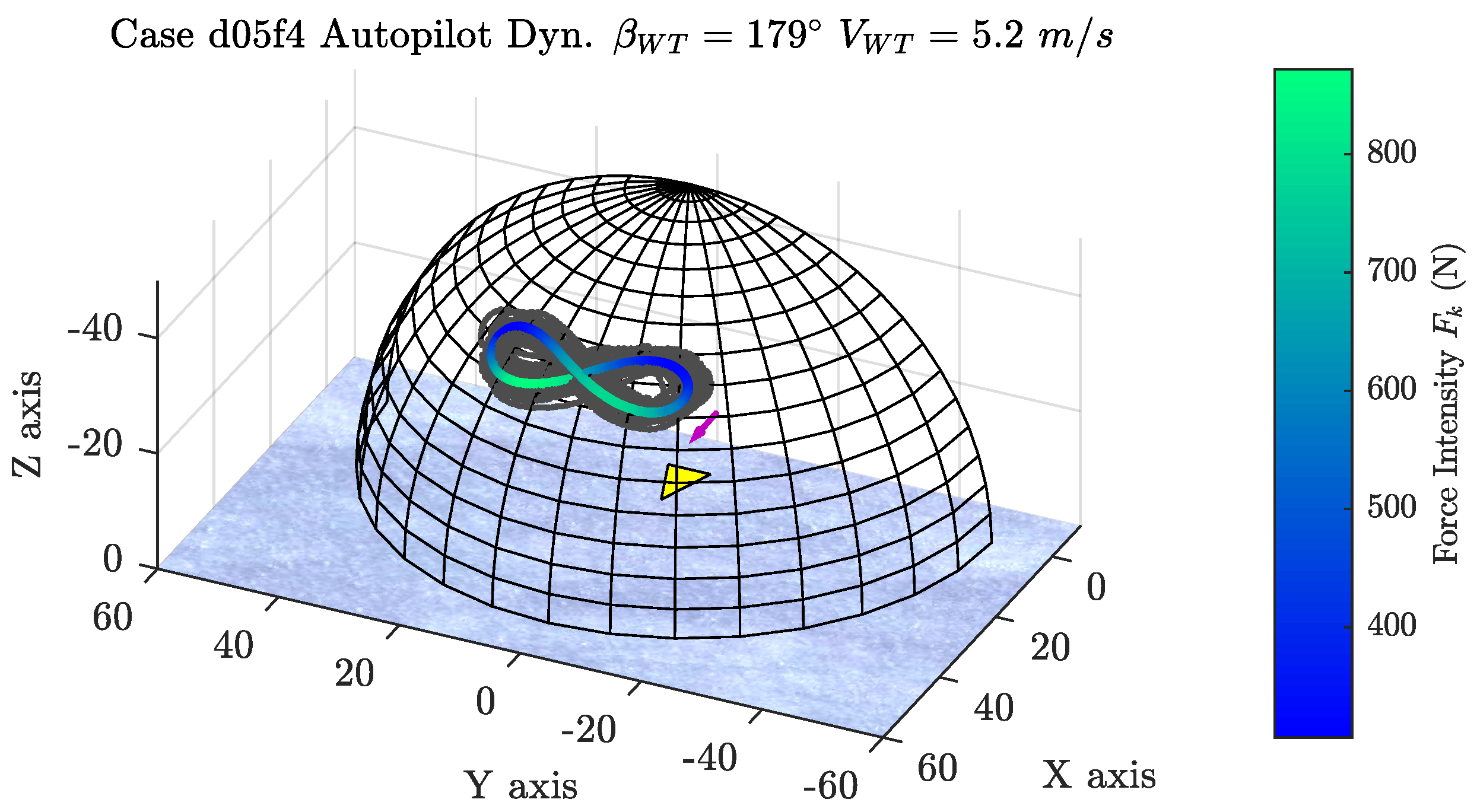

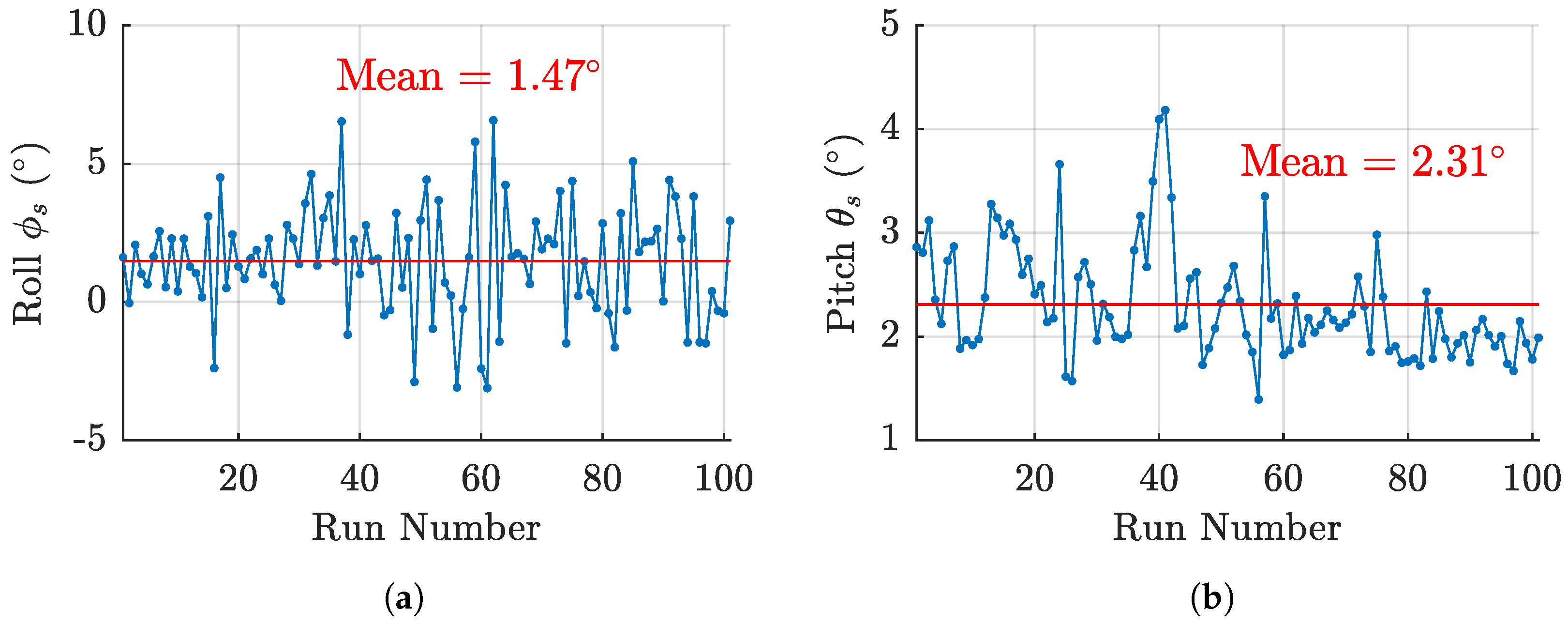
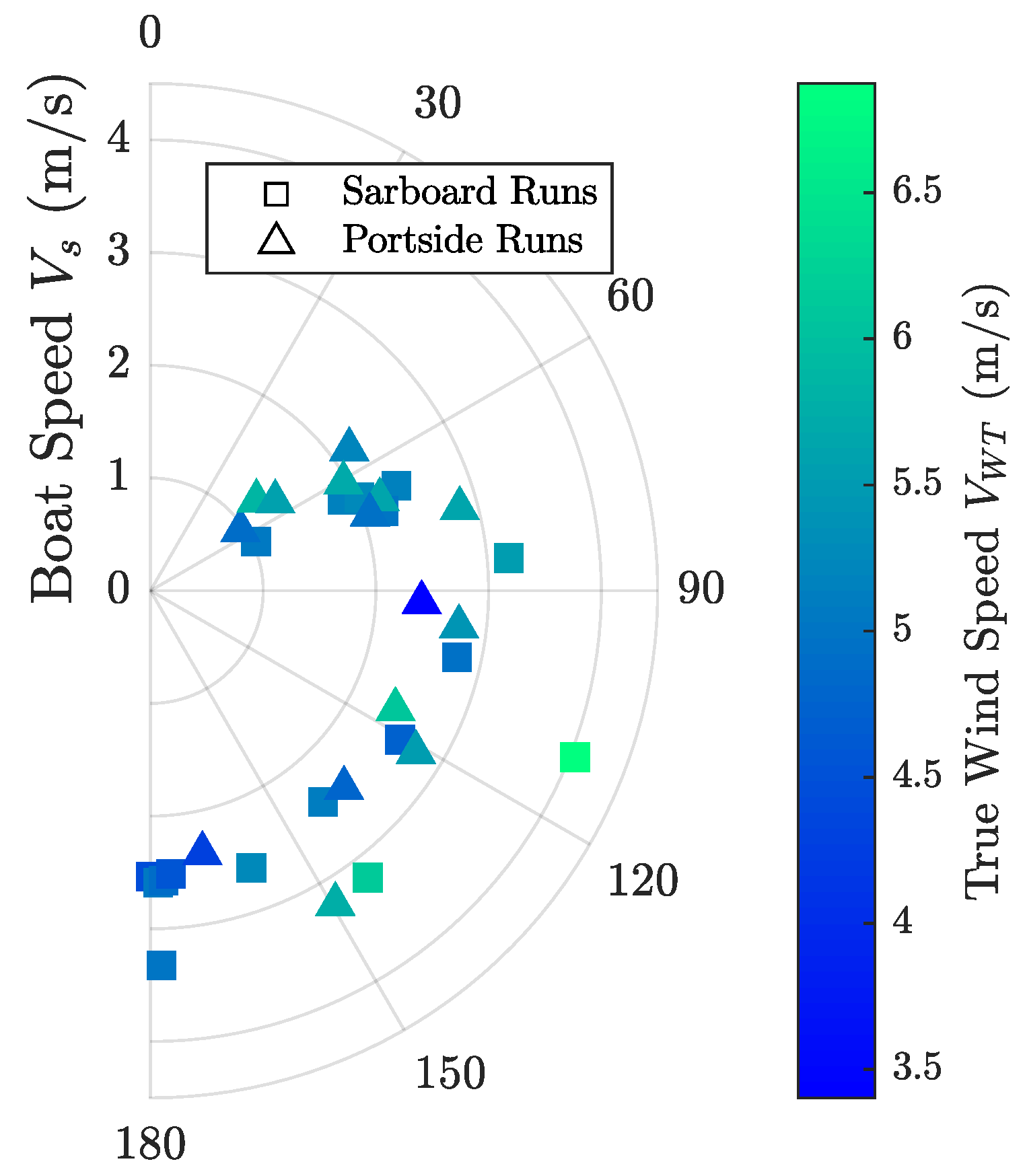
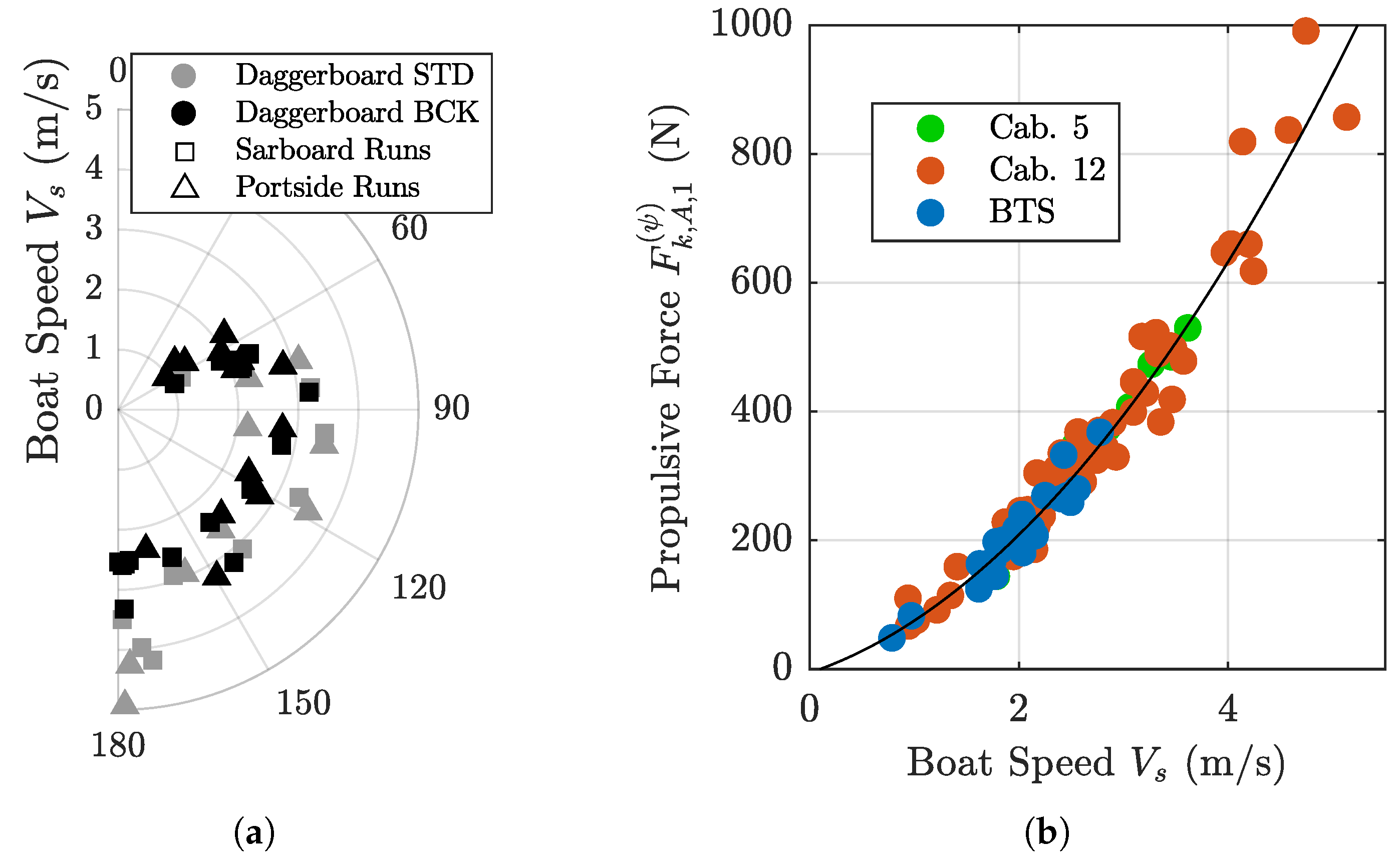
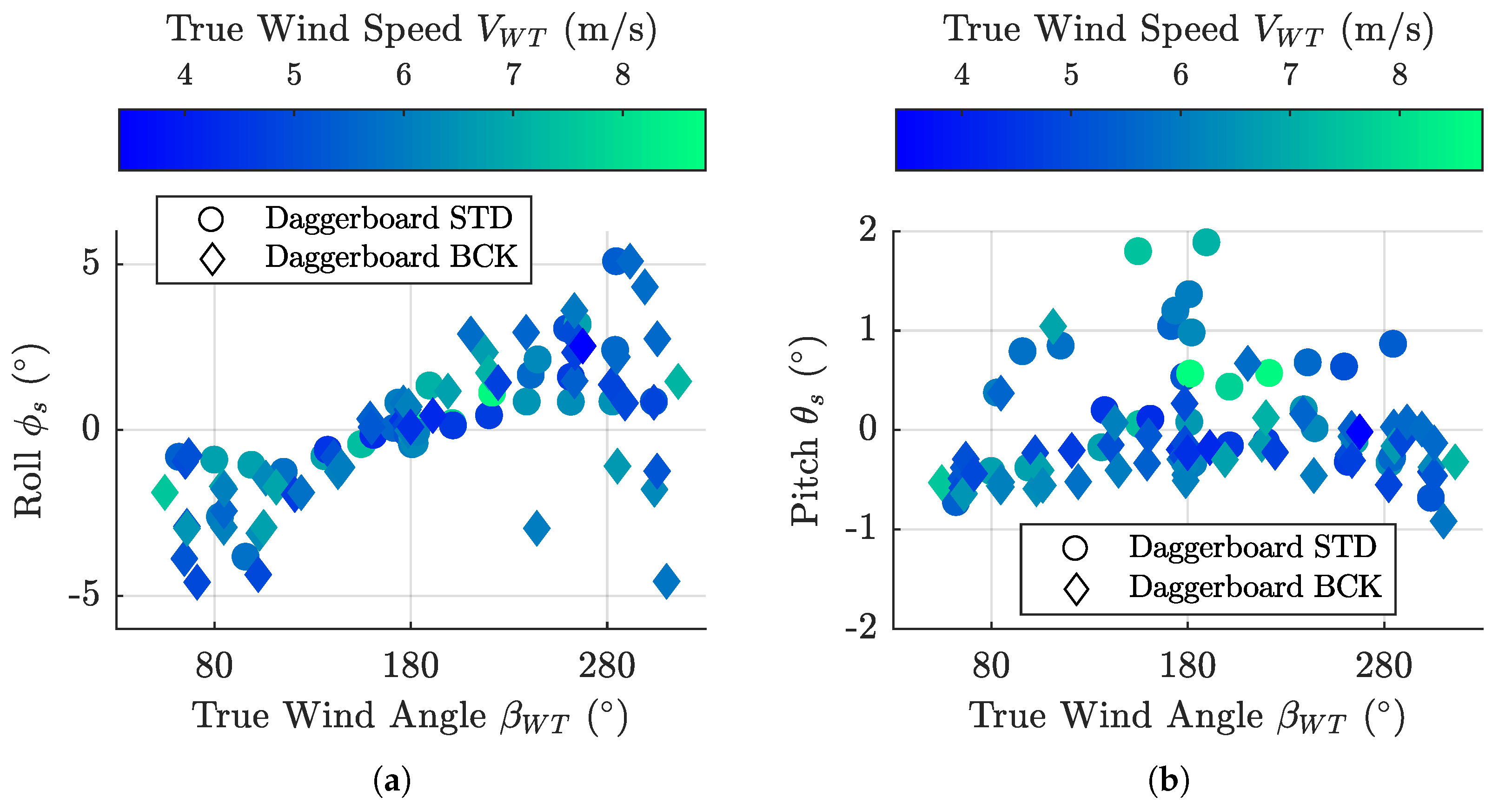
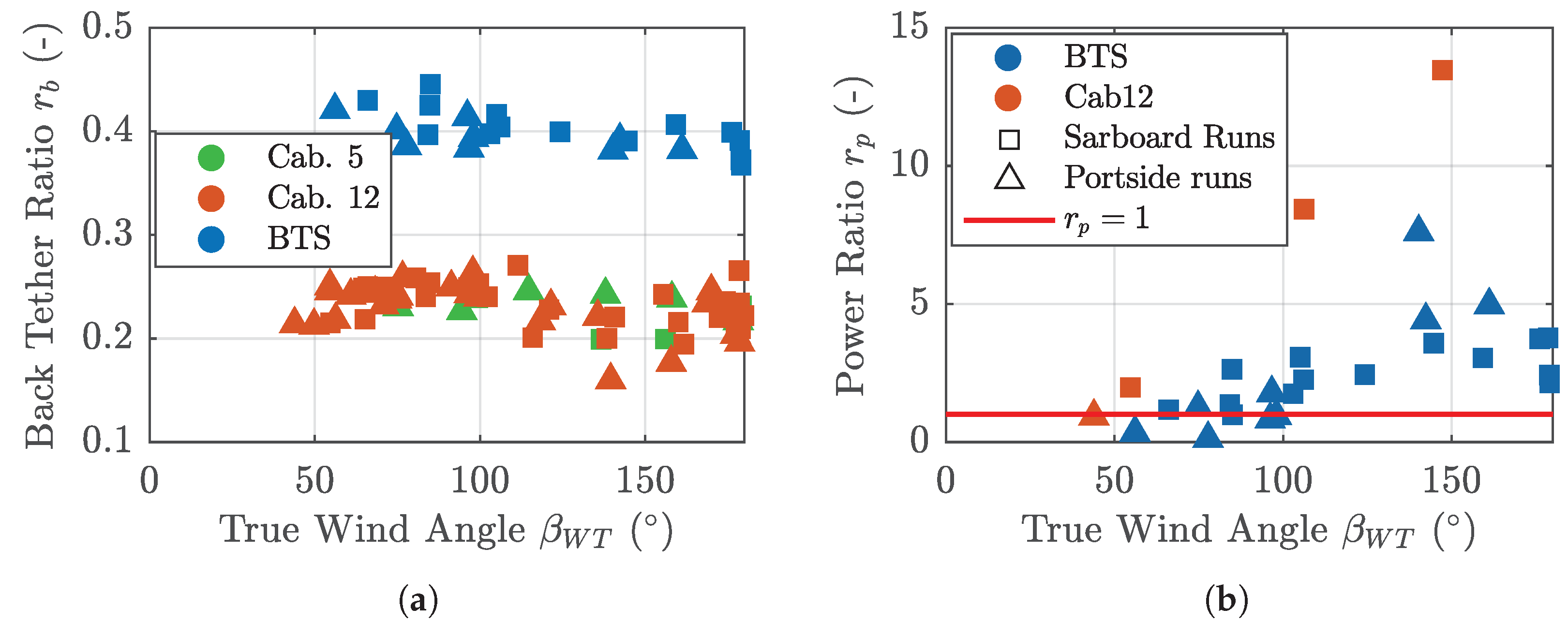
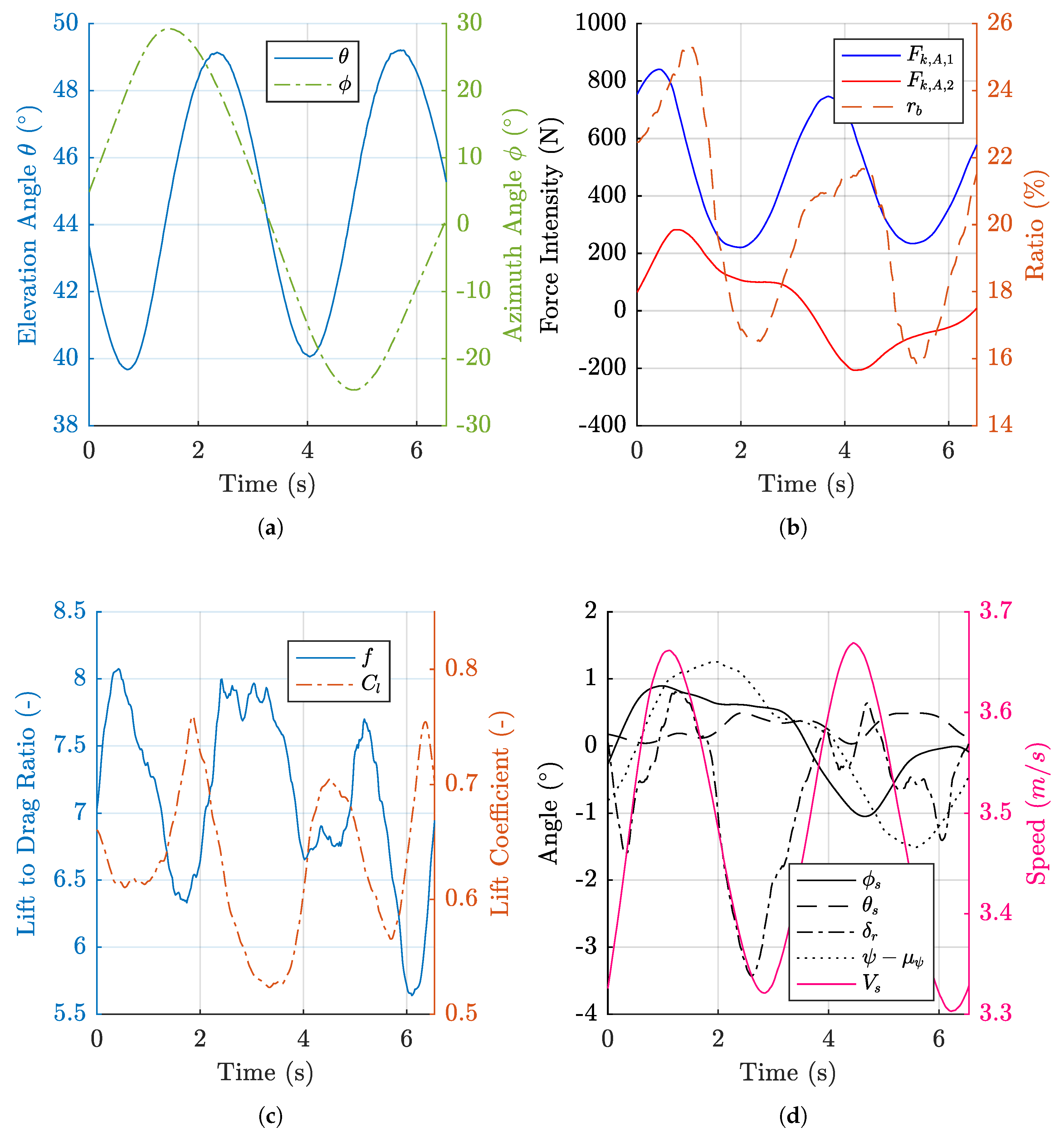
| Information Related to the Boat | Information Related to kIte Data | ||
|---|---|---|---|
| Symb. | Details | Symb. | Details |
| (COG) | Course Over Ground | Front tether force vector | |
| Speed of the boat | Left back tether force | ||
| Heading of the boat (HDG) | Right back tether force | ||
| Pitch angle of the boat | Position of actuator 1 (left) | ||
| Roll angle of the boat | Position of actuator 2 (right) | ||
| Rudder angle | |||
| Domains | D01 | D02 | D03 | D04 | D05 |
|---|---|---|---|---|---|
| Horizontal resolution | 8910 m | 2970 m | 990 m | 330 m | 110 m |
| Vertical resolution (0–300 m altitude) | 20 m | 20 m | 20 m | 20 m | 20 m |
| Modelling scale | Meso | Submeso | Submeso | LES | LES |
| Case | Kite | |||||||||||||
|---|---|---|---|---|---|---|---|---|---|---|---|---|---|---|
| d01f7 | Cab. 5 | 137 | 0.76 | 1.28 | 0.20 | 0.13 | 12.1 | 2.4 | 4.7 | 1.3 | 0.75 | 4.3 | 49.3 | 22.7 |
| d02f5 | Cab. 12 | 182 | 0.47 | 0.90 | 0.19 | 0.11 | 8.2 | 3.1 | 1.5 | 0.8 | 0.87 | 4.8 | 69.6 | 10.1 |
| d02f6 | Cab. 12 | 182 | 0.67 | 0.96 | 0.20 | 0.10 | 2.9 | 4.2 | 2.0 | 1.0 | 0.85 | 12.9 | 57.9 | 10.1 |
| d04f1 | Cab. 12 | 183 | 0.62 | 0.95 | 0.22 | 0.09 | 4.1 | 3.9 | 1.6 | 0.6 | 0.66 | 4.0 | 50.9 | 7.0 |
| d05f4 | Cab. 12 | 179 | 0.69 | 1.12 | 0.20 | 0.11 | 4.2 | 2.8 | 1.9 | 0.5 | 0.92 | 12.7 | 53.9 | 9.5 |
| d07f12 | Cab. 12 | 121 | 0.60 | 2.00 | 0.21 | 0.34 | 7.8 | 4.7 | 3.8 | 1.4 | 0.91 | 5.2 | 41.4 | 23.7 |
| d07f18 | Cab. 12 | 263 | 0.31 | 1.80 | 0.23 | 0.y31 | 12.0 | 18.6 | 10.7 | 0.8 | 0.97 | 3.6 | 47.2 | 13.5 |
| d08f1 | Cab. 12 | 180 | 0.80 | 1.34 | 0.22 | 0.16 | 4.7 | 1.4 | 1.5 | 0.7 | 1.07 | 8.1 | 52.9 | 9.5 |
| d10f8 | BTS | 220 | 0.72 | 1.18 | 0.38 | 0.15 | 7.2 | 4.0 | 3.3 | 1.1 | 0.70 | 4.0 | 54.4 | 25.9 |
| d11f4 | BTS | 106 | 0.49 | 1.22 | 0.40 | 0.14 | 12.9 | 6.2 | 4.0 | 1.9 | 0.73 | 3.2 | 51.1 | 21.7 |
© 2020 by the authors. Licensee MDPI, Basel, Switzerland. This article is an open access article distributed under the terms and conditions of the Creative Commons Attribution (CC BY) license (http://creativecommons.org/licenses/by/4.0/).
Share and Cite
Roncin, K.; Behrel, M.; Iachkine, P.; Leroux, J.-B. Benchmark Sea Trials on a 6-Meter Boat Powered by Kite. Appl. Sci. 2020, 10, 6148. https://doi.org/10.3390/app10186148
Roncin K, Behrel M, Iachkine P, Leroux J-B. Benchmark Sea Trials on a 6-Meter Boat Powered by Kite. Applied Sciences. 2020; 10(18):6148. https://doi.org/10.3390/app10186148
Chicago/Turabian StyleRoncin, Kostia, Morgan Behrel, Paul Iachkine, and Jean-Baptiste Leroux. 2020. "Benchmark Sea Trials on a 6-Meter Boat Powered by Kite" Applied Sciences 10, no. 18: 6148. https://doi.org/10.3390/app10186148
APA StyleRoncin, K., Behrel, M., Iachkine, P., & Leroux, J.-B. (2020). Benchmark Sea Trials on a 6-Meter Boat Powered by Kite. Applied Sciences, 10(18), 6148. https://doi.org/10.3390/app10186148





